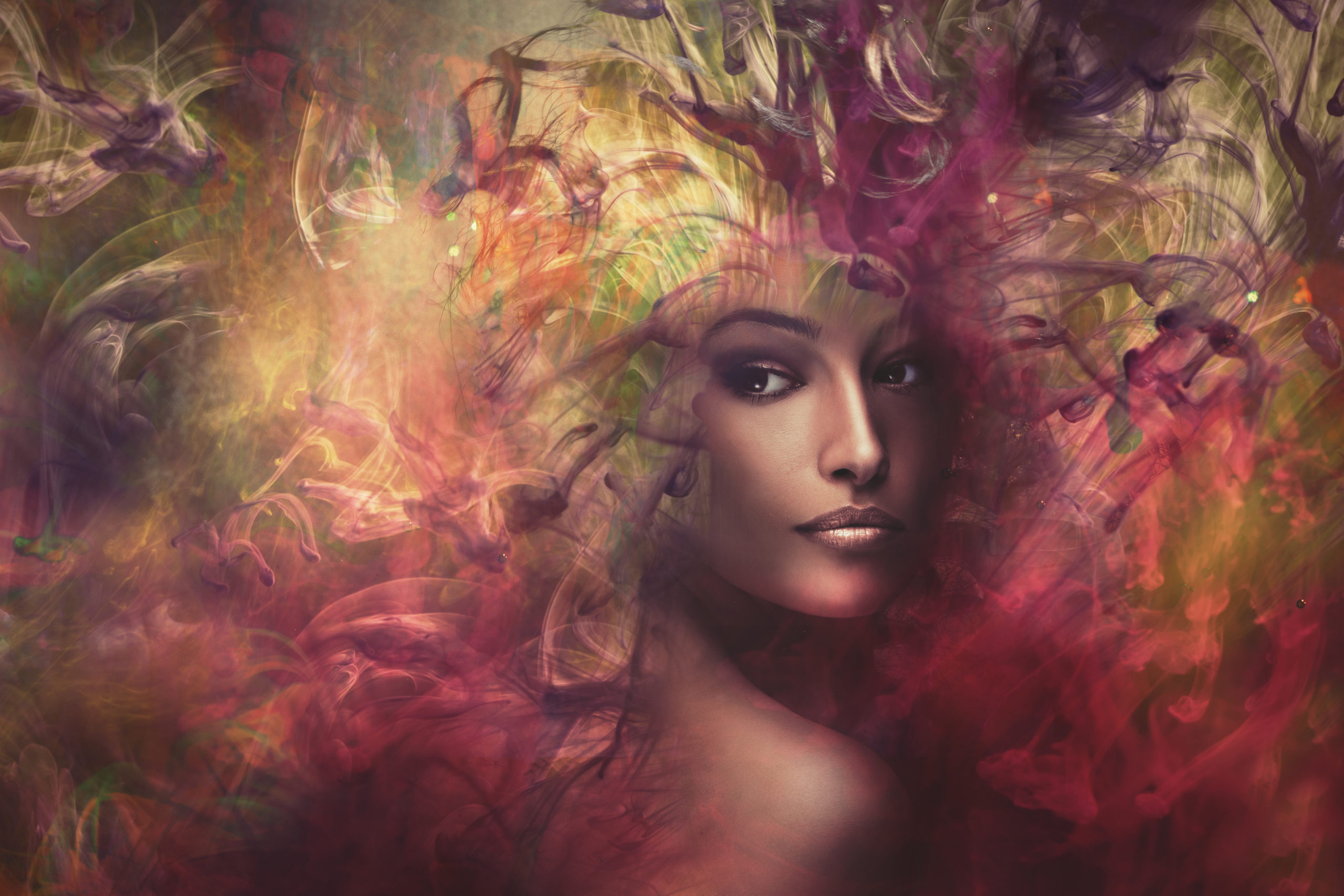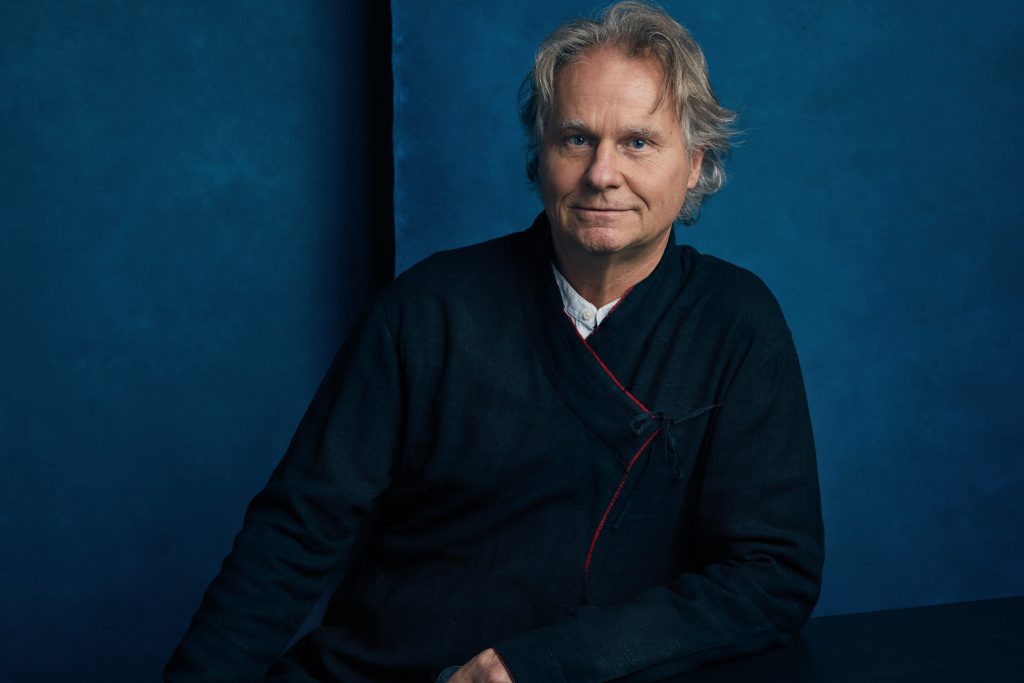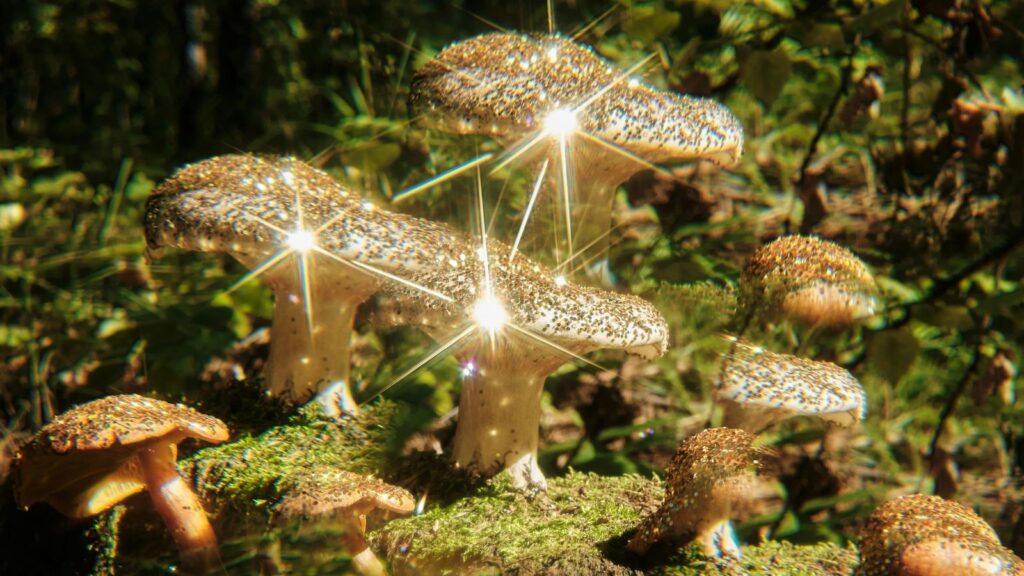Wade Davis, anthropologist and best-selling author, known for his work among indigenous communities in the Amazon, has written on topics ranging from Haitian voodoo to our current climate crisis. His research has taken him to every continent – including a recent trip to Antarctica – documenting cultures, plants, and the world at-large. He speaks openly about the influence entheogens have had on his life – informing his understanding of cultural relativism, inspiring how he writes, his use of language, and his very sense of the natural world.
Davis first took ayahuasca as a student in the 70s, before arose what is now a booming ayahuasca tourism industry in places like Iquitos and Pucallpa. He also, over the past four decades, has participated in traditional ceremonies with indigenous communities, learning about how they think and understand the sacred ayahuasca vine, among other plants. He’s spent much of his life talking about the reverence we must have for these plants and how indigenous people interpret them, which he describes as “completely” different from how most North Americans and Europeans do.
He told Reality Sandwich that this doesn’t mean, however, that the use of ayahuasca among more modern, urban circles is illegitimate. It merely poses challenges that must be discussed. He hopes to spark that conversation at the World Ayahuasca Conference this spring, where he’ll be giving the opening keynote speech. He spoke to us about some of the central themes he’ll address and what he’s thinking about most now with regards to the popularization of ayahuasca around the globe.
Can you just begin by talking about where we’re at now with ayahuasca?
I was very fortunate as a young student to fall into the orbit of Professor Richard Evans Schultes, who introduced me to his colleagues and friends, all pioneers of psychedelic research, the founding gods of the discipline if you will. Gordon Wasson and Albert Hoffman, the anthropologists Peter Furst, Johannes Wilbert, Weston La Barre, and Gerardo Reichel Dolmatoff. Andy Weil and Tim Plowman, Schultes’ greatest proteges, were like big brothers to me. And, of course, the McKenna brothers, Dennis and the late Terence. We first became friends on a notorious expedition to the Ampiyacu, the river of poisons in the northwest Amazon in 1981.
When I first took ayahuasca, it was virtually unknown outside of a small cadre of ethnobotanists and explorers. Obviously, The Yage Letters between William Burroughs and Allen Ginsberg had been picked up along the Gringo trail. By the early 70s, roadside shamanism − serving the international gringo trade, but also serving just ordinary working class and rural Latinos from throughout the continent − had already come up along the road between Sibundoy and Mocoa, but still it was a substance that was extraordinarily obscure, even at the height of the psychedelic era.
It was obscure, in part, because it wasn’t particularly pleasant and, given that, I find it absolutely fascinating that this substance of all substances has caught the winds of the zeitgeist and is now ubiquitous. Set and setting determine one’s experience with these powerful entheogens, and it seems to me that in some curious way the zeitgeist around ayahuasca has just shifted. I mean, if you talk to people in my generation, experienced psychonauts as Terence might call them, they tend to recall their experience with ayahuasca much as I do.
And how is that?
Sheer misery. Taking ayahuasca is like drinking a potion that’s steeped in stomach bile and mixed with all the leaves of the rainforest. When you talk to the shaman or the indigenous people, they don’t see it as a pleasant experience. They use metaphors like you’re nursing from the breast of a jaguar woman and then she tears you from her breast and flings you into a pit of vipers.
I once took ayahuasca with the Cofan, with a friend of mine Randy Borman, who was the chief at the time. In the wake of a traditional ceremony, men alone isolated in a hut built for the occasion in the forest, we had a spontaneous debriefing. I mentioned that the potion really could be terrifying. They all responded that this was the very point. As Randy noted, it’s not for the faint hearted.
It’s interesting how this new generation of young people don’t use that kind of language to describe their experiences with ayahuasca. In Colombia, for example, ayahuasca is all the rage, consumed by all sorts people, students, young professionals, mystic seekers. And those of a certain generation describe their experiences in very positive terms, as if the substance was gently transcedent and beneign. Revelatory intuitions and gentle sensations and intuitions that I associate much more with mescaline containing plants such San Pedro, the Cactus of the Four Winds.
Why do you think ayahuasca has become so popular at this time?
I think some of it comes down to which phenomenon gets the best press coverage. Ayahuasca, or yagé as it is known in Colombia, has always had a certain mystique – Burroughs and Ginsberg, the Amazon forests, medicinal plants, shamananic traditions. In fact, shamanism is often misunderstood. He or she may well serve as both healer and priest, but the shaman is fundamentally a technician of the sacred. In certain regions of the Northwest Amazon, in particular, the shaman is more like a nuclear engineer who goes into the heart of the reactor to reprogram the world. Shaman among the Barasana and Makuna don’t even deal with medicinal plants. Herbal medicine remains exclusively in the realm of the women. Certainly, at the World Ayahuasca Conference, I look forward to reflecting on this, and examining ayahuasca in the context of traditional ceremony in the Amazon.
Can you talk to me about that context? What do you think people should know about it?
Most people who experience ayahuasca do so in places like Iquitos and Pucallpa, in commercial settings set up to cater to the traveler, both local and foreign. Nothing wrong with this, though of course the quality of the individual, often self-professed healers or curanderos, ranges from the insightful to the fraudulent. Nothing wrong with practice of urban shamanism, but not unlike the UDV or the Santo Daime, it’s a modern movement that has coalesced around the preparation. The ideology and ritual practices of the UDV, for example, are an invented reality, a spiritual structure that serves the needs of the acolytes of the movement, but has little to do with the traditional use of yagé by the Barasana, Makuna, Tukanos and other indigenous peoples of the Northwest Amazon.
Some years ago, the Colombian anthropologist Martin Von Hildebrand and I made a film in collaboration with the Barasana and Makuna of the Río Piraparaná. It was a glorious month-long process that culminated in a three-day event where all the men took yagé around the clock for three days and three nights.
White people see with their eyes, but the Barasana see with their minds. As the ritual begins, time collapses. There are two series of dances, separated by the liminal moments of the day, dawn, dusk, and midnight. In donning the feathers, the yellow corona of pure thought, the white egret plumes of the rain, the men become the ancestors, and under the influence of yagé, a powerful hallucinogenic journey both to travel to the dawn of time and into the future, visiting the sacred sites and all the points of origin, 1,800 toponyns, actual place names remembered from the mythical journey, paying homage to every creature, as they celebrate their most profound cultural insight – the realization that animals and plants are only people in another dimension of reality.
Their goal is to bring order to the universe, to maintain the energetic flows of life. Their myths and cosmology, the depth and the specificity of their beliefs and adaptations, their rules and restrictions, amount essentially to a complex land management plan dictating precisely how human beings in great numbers can thrive in the upland forests of the Amazon.
In Spain, I look forward to speaking about this cultural matrix, but also hope to discuss the fundamental mystery of ayahuasca, which is its genesis. How in a flora of 80,000 species of plants did they learn to combine the leaves of a nondescript shrub, with bark of an obscure liana to create this powerful synergistic effect, the whole being greater than the sum of the parts? The astonishing story of MAO inhibitors and tryptamines that Dennis McKenna has so eloquently articulated. The indigenous people are true natural philosophers who understand the botanical realm as they do because their lives depend upon it.
And I would like as well to reflect on the role of entheogens in general as agents of societal and spiritual transformation.
What transformations are those? How do ayahuasca and psychedelics figure into them?
Women going from the kitchen to the board room. People of color from the woodshed to the White House. Gay people from the closet to the altar. Environmentalism becoming quite legitimately a new religion. Fifty years ago, just getting people to stop throwing garbage out of a car window was an environmental victory. Nobody spoke of the biosphere or biodiversity. Now those terms are a part of the vernacular of school children. As we look at this wave of luminosity that has swept over the world in just a generation or two, it’s fascinating how the one ingredient in the recipe that has been completely expunged from the record is the fact that millions have laid prostrate before the gates of awe having taken a psychedelic.
Our parents back in those days always warned us: “Don’t take this stuff, you’ll never come back the same.” But, of course, they didn’t understand that was the entire point. So, to me, you know, as a whole the ayahuasca scene gets dangerously close to appropriation when people try to invoke iconography from the rainforest, for example, which has nothing to do with their lives. But that said, the actual pure physical experience of a psychedelic, I think, is something that I can’t imagine, at least in myself, having not gone through. It’s like Wasson said, “How do you describe to a person what mushrooms are like? It’s like trying to tell a blind man what it’s like to see.” I think that eventually we will recognize that and maybe that’s what we can attribute the surge in interest to and all the legitimate use of these substances in psychedelic therapies too. Finally, they’re getting their moment in time.
Do you think that more modern urbanites who drink ayahuasca should be learning about the traditional use of ayahuasca?
I think that all people who take a sacred plant like that should be cognizant of its origins and its cultural context. At the same time, just as those of us from the western industrial world are free and encouraged to embrace, for example, the Buddhist Dharma, we have every right to seek insights and illumination through the use of entheogenic plants, even if this implies the use of sacred substances that remain of fundamental importance to other cultures, indigenous peoples in particular.
In doing so, I would certainly encourage everyone to treat these substances with the respect and reverence they deserve. And to follow the lead of those with very deep experience of such medicines. Indigenous peoples always take such substances in natural forms, which are always pharmacologically the most benign way to ingest any psychoactive drug. They recognize that the use of such sacraments is a proper thing to do, if done judiciously. They know as well that these powerful preparations have a completely ambivalent potential for good or evil, which is one reason they always envelop the participant with a protective cloak of ritual that insulates the user from the potentially challenging pharmacological and psychological impacts of the drugs.
Interesting that you say these substances can be used for good or evil. A big focus of the World Ayahuasca Conference will be on how ayahuasca can be used as a tool for planetary healing and what role that might play in helping us to respond to the current climate crisis. There will be some indigenous leaders at the conference who use ayahuasca as a tool to build political resilience against extractive forces. In North America, we’re certainly more conscious than we were in the past, as you’ve explained, but we have a long way to go in terms of environmental apathy. Do you think ayahuasca can or should be used to change that?
I’m not sure the ingestion of ayahuasca is going to bring on a golden age of environmental justice. Activism and political movements, local people fighting to protect their rivers, forests and oceans, this is the real work. But the visionary realm unleashed by these sacred plants does allow one to see in new ways. Let me explain with a specific example from my experience growing up, how I came to see things differently, embracing both the lessons of cultural relativism even while coming to an understanding of why and how we do what we do to the earth.
Consider for a moment the climate crisis. We often forget that while climate change has become humanity’s problem, the problem was not caused by humanity. The crisis has in fact been provoked by a relatively small subset of the human population, a particular cultural tradition that over time has reduced the world to a mechanism, the planet to a commodity, with nature itself being seen as but an obstacle to overcome. During the Renaissance and well into the Enlightenment, in our quest for personal freedom, we in the European tradition liberated the human mind from the tyranny of absolute faith, even as we freed the individual from the collective, which was the sociological equivalent of splitting the atom. And, in doing so, we also abandoned many of our intuitions for myth, magic, mysticism, and, perhaps most importantly, metaphor.
The universe, declared René Descartes in the seventeenth century, was composed only of “mind and mechanism.” With a single phrase, all sentient creatures aside from human beings were devitalized, as was the earth itself. “Science,” as Saul Bellow wrote, “made a housecleaning of belief.” The triumph of secular materialism became the conceit of modernity. The notion that land could have anima, that the flight of a hawk might have meaning, that beliefs of the spirit could have true resonance, was ridiculed, dismissed as ridiculous.
The reduction of the world to a mechanism, with nature but an obstacle to overcome, a resource to be exploited, has in good measure determined the manner in which our cultural tradition has blindly interacted with the living planet.
As a young man, for example, I was raised on the coast of British Columbia to believe that the rainforests existed to be cut. This was the essence of the ideology of scientific forestry that I studied in school and practiced in the woods as a logger. This cultural perspective was profoundly different from that of the First Nations, those living on Vancouver Island at the time of European contact, and those still there. If I was sent into the forest to cut it down, a Kwakwaka’wakw youth of similar age was traditionally dispatched during his Hamatsa initiation into those same forests to confront Huxwhukw and the Crooked Beak of Heaven. The point is not to ask or suggest which perspective is right or wrong. Is the forest mere cellulose and board feet? Was it truly the domain of the spirits? Who is to say? Ultimately these are not the important questions.
What matters is the potency of a belief, the manner in which a conviction plays out in the day-to-day lives of a people, for in a very real sense this determines the ecological footprint of a culture, the impact that any society has on its environment. A child raised to believe that a mountain is the abode of a protective spirit will be a profoundly different human being from a youth brought up to believe that a mountain is an inert mass of rock ready to be mined. A Kwakwaka’wakw boy raised to revere the coastal forests as the realm of the divine will be a different person from a Canadian child taught to believe that such forests are destined to be logged.
Herein lies the essence of the relationship between many indigenous peoples and the natural world. Life in the malarial swamps of New Guinea, the chill winds of Tibet, the white heat of the Sahara, leaves little room for sentiment. Nostalgia is not a trait commonly associated with the Inuit. Nomadic hunters and gatherers in Borneo have no conscious sense of stewardship for mountain forests that they lack the technical capacity to destroy. What these cultures have done, however, is to forge through time and ritual a relationship to the earth that is based not only on deep attachment to the land but also on far more subtle intuition – the idea that the land itself is breathed into being by human consciousness. Mountains, rivers, and forests are not perceived as being inanimate, as mere props on a stage upon which the human drama unfolds. For these societies, the land is alive, a dynamic force to be embraced and transformed by the human imagination.
Now how exactly did I, raised in a modest family in a quite ordinary suburb of Montreal come to think such thoughts? Well certainly knowledge and education played a big role, and for that I can thank the immense generosity of my parents. But when I look back at the width and depth of the chasm that separates me today from the orthodox expectations of my youth, I can’t help but think that psychedelics were instrumental, cracking open the sky, flinging wide the windows of the mystic.
What role do you think the World Ayahuasca Conference might play in all of this?
I think that the more we can, not necessarily in a scientific, but in a serious, reverent way acknowledge this movement, remain always cognizant of the challenges of appropriation, the better. Ayahuasca is a very powerful medicine. Despite all of my experience with psychedelics going back over 40 years, I would never presume to lead an ayahuasca session. It’s probably wise to cast a cautious eye on those who do take on the mantle of spiritual leadership. Mail order mystics abound, conmen of the night.
Such challenges aside, if we elevate ayahuasca and the movement in a way that presents a positive image of grace and goodness, perhaps more will take the leap, experimenting with not just ayahuasca, but other sacred plants. Those who polish their eyeballs with awe, really do see the world in new ways.
***
This interview was edited for length and clarity.
Main image: Dua Meke Newane” by Isaia, 2014
Isaia is of the Huni Kuin tribe of the Amazon and part of an artist collective called Mahku. This artwork will be featured at the World Ayahuasca Conference. The exhibit will be featuring over 50 ayahuasca and visionary artists from around the world.
















